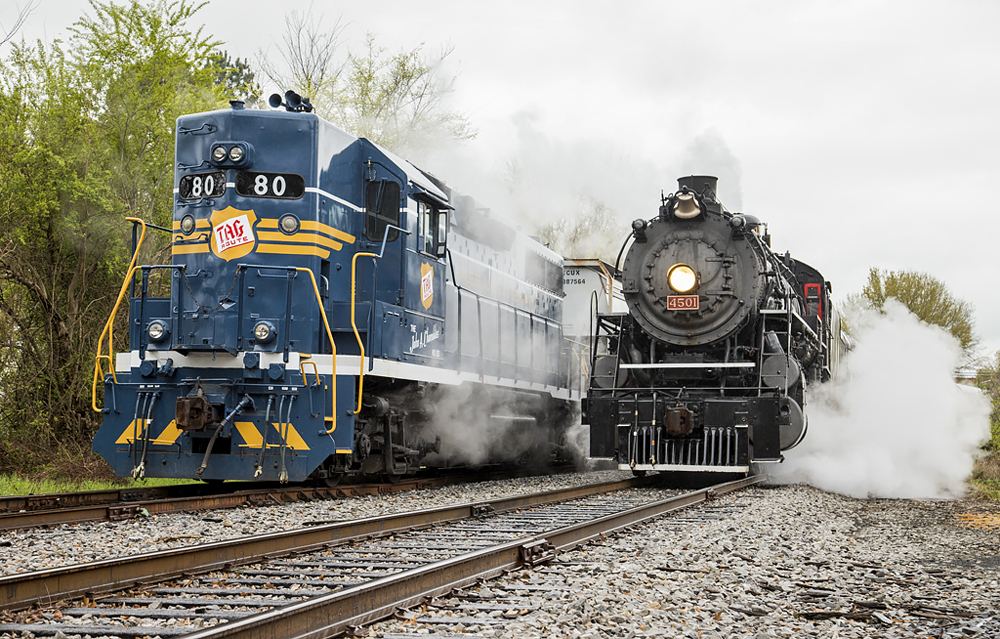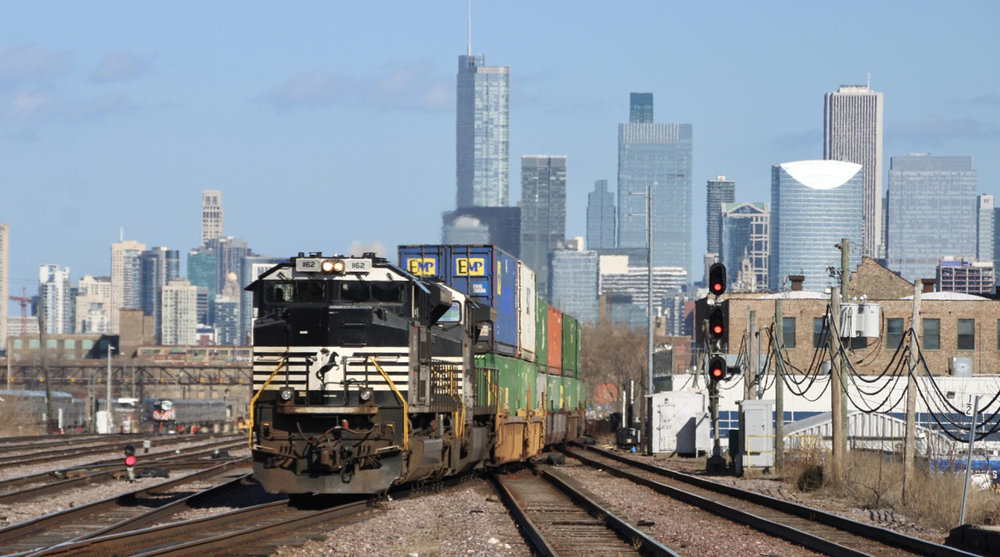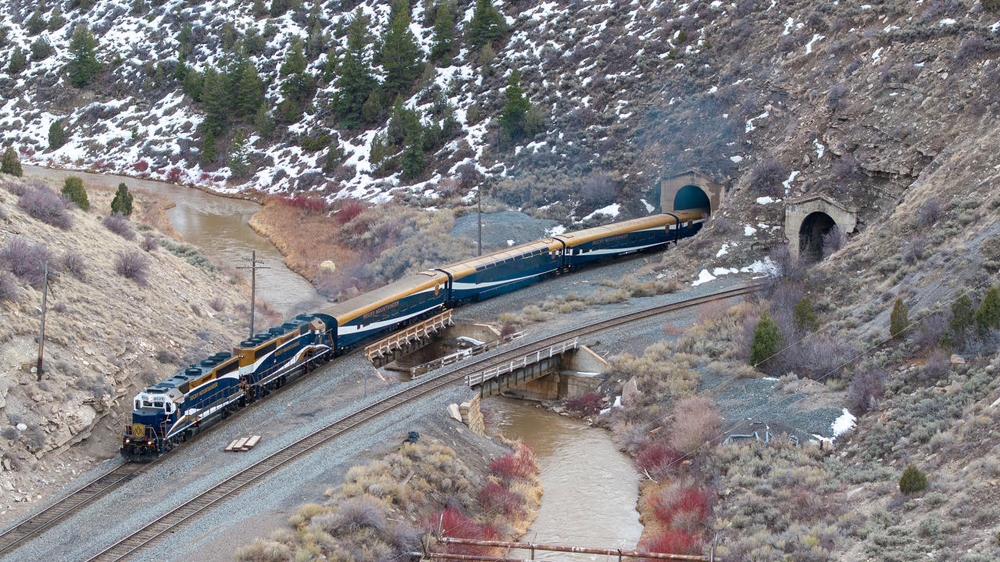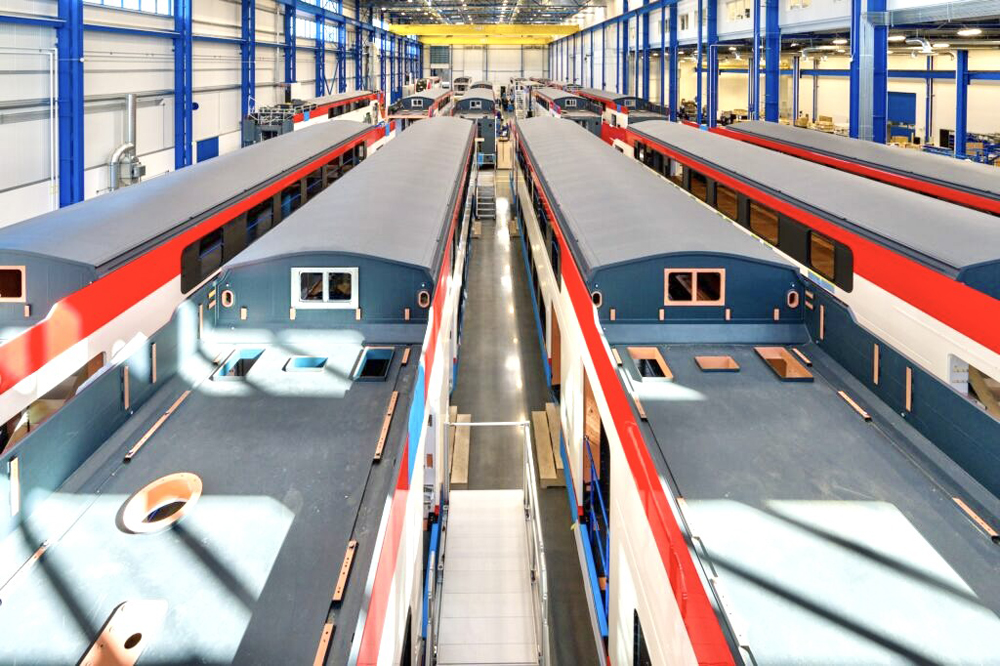
CHICAGO — Tourist railroads continue to see strong summer demand despite record inflation and high fuel prices. Railroads note, however, that the tide may be turning as mounting economic uncertainty may change consumer buying decisions.
According to the U.S. Travel Association, American consumers reached a new pandemic high of $101 billion in travel spending in May, outpacing April’s high by $1 billion. The American Automobile Association predicted an estimated 48 million Americans would travel during the Fourth of July holiday, a 4% increase from a year ago and nearly on-par with pre-pandemic 2019. But despite strong consumer travel behavior, AAA notes that more than 40% of American travelers are now worried that rising fuel prices will affect their decision to travel in the next six months.
“We have continued to see strong visitation measured against 2019 on our currently operating trains in Chattanooga and also on the Hiwassee,” says Tim Andrews, president of the Tennessee Valley Railroad Museum.
He says the region’s visitor’s bureau, the Chattanooga Tourism Co., and other local attractions believe the momentum might be the result of short-distance trips from areas like Atlanta, Nashville, and Huntsville, Ala.
“Hotel-motel tax collections continue to be strong, probably due to both room prices and volume,” he says. “Obviously if fuel was keeping people away, we would see a double whammy as prices fall due to a lack of demand and room inventory rise as well.”
“I suspect the percentage of riders from the 150 mile-radius will rise,” Andrews forecasts.
The Cincinnati Scenic Railway and the Lebanon Mason & Monroe Railroad in Ohio are seeing a subtle shift in consumer behavior as well.
“So far in 2023, we are noticing that ticket sales are trending slightly lower for just the basic weekday train ride experience,” says Ray Kammer Jr., president of the company that operates the two tourist lines and the Cincinnati Railway Co., which offers private-car trips. “I attribute this to less out-of-town people traveling during the week due to higher fuel and lodging costs.”
Kammer says the company’s special-event themed train rides continue to sell at the same pace as 2022 and most of these sales are generated locally, within a day’s drive.
While tourist railroad ridership remains strong, possibly driven by more local trips, railroads have been able to weather their own fuel bills with minor operational changes or adjustments to ticket prices.
High diesel fuel prices “are having a minor impact on us during this first half of the year because we only operate a few days per week,” says Kammer. “We will really begin to feel the impact of higher fuel costs during the fourth quarter, which when we operate at an increased volume.”
To combat the cost of fuel, Kammer says the company is implementing cost-reducing measures, like cutting down locomotive idle time and installing electrified locomotive hot starts. A hot start allows diesel locomotives to be shut down at any time, while retaining the ability to restart immediately, reducing unnecessary idle time.
TVRM has increased ticket prices slightly to help combat inflationary pressure and fuel costs.
“Our fuel bills for diesel are double last year’s but are still a relatively small percentage of our overall operating costs, so they have been covered with a small increase in ticket price,” says Andrews.
Food and gift shop supplies are also more expensive — either the cost of the product, its postage, or surcharges, he notes. “We have made small increases in our selling prices to try and offset that.”
Andrew says the railroad’s for-profit freight and track repair business has tacked on a fuel surcharge to cover higher fuel prices when such a clause is not already built into a contract.
“A pleasant surprise is that the price of coal is basically the same per ton, even with increased fuel prices for delivery by truck,” he notes.
To put fuel costs into context, a first-generation EMD F7 has a fuel capacity of 1,200 gallons. Last summer, it would have cost a tourist railroad approximately $4,160 to fuel an F7, compared to $6,972 today, an increase of 67%. Similarly, the current average price of regular gasoline means that the average vehicle in the U.S. costs $65 to fill up, compared to $44 a year ago. The current national average for regular gasoline today is $4.68 compared to $3.14 a year ago.
It’s likely tourist railroads will continue to closely gauge inflation and consumer behavior by monitoring advanced ticket reservations, late summer occupancies, and general interest around popular fall and holiday excursions. If inflationary issues persist, railroads may need to do more to curb costs and weather the uncertainty ahead.













